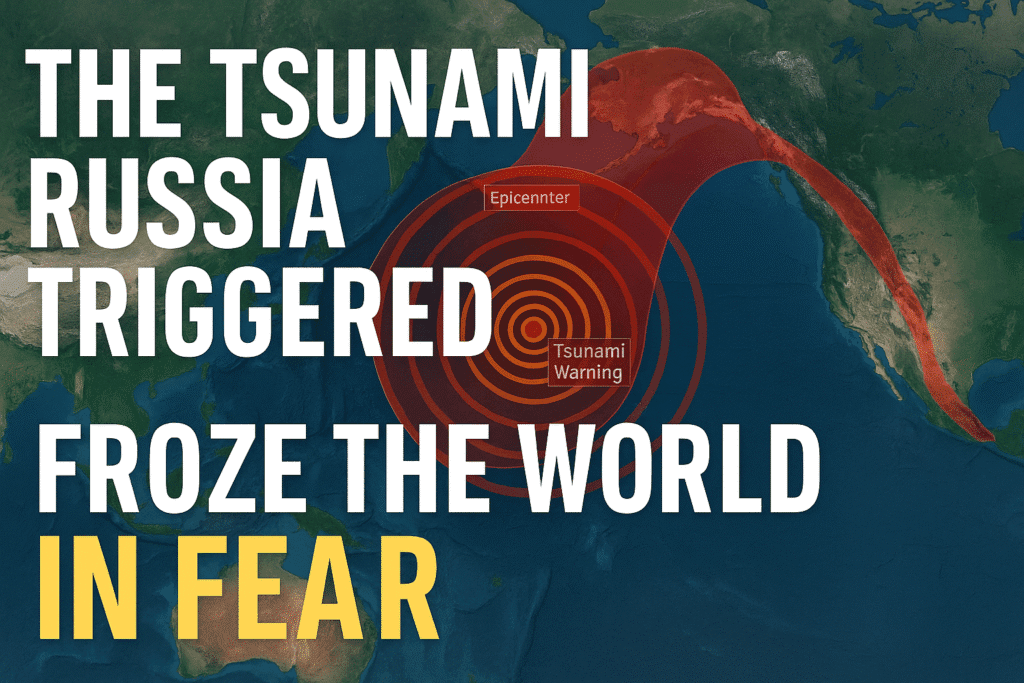
On July 29, 2025, a magnitude 8.8 undersea quake off Russia’s Kamchatka Peninsula launched a tsunami that spread terror across the Pacific. The shockwaves were swift… the fear was universal.
⚠️ Why This Matters to Pakistan and Asia
Even though this quake occurred near Russia, tsunami warnings went out from Japan to Hawaii, Chile to Taiwan. In Asia—including Japan and Taiwan—officials activated tsunami protocols, and millions in the path of danger evacuated. Asianet Newsable+15Live Science+15Condé Nast Traveler+15
That global reaction should matter to Pakistan too—any remote seismic shift in the Pacific Ring of Fire can have ripple effects across our region via ocean currents and safety lessons.
🚨 What Actually Happened
- Epicenter: ~150 km east of Petropavlovsk‑Kamchatsky, at ~19 km depth AP News+10Live Science+10The News International+10
- Saw tsunami waves up to 4 m along Kamchatka, flooding coastal towns like Severo‑Kurilsk The Times of India+5The Times+5Live Science+5
- In Japan, Hawai‘i, U.S. West Coast, waves stayed under 1 m or advisory level only, but officials evacuated nearly 2 million people in Japan and activated emergency plans in Hawai‘i The Washington Post+5Live Science+5AP News+5
🔍 Why Tsunami Wasn’t Worse
- No massive underwater landslide—so energy stayed low abroad The Washington PostElHuffPost
- Critical use of modern warning systems, including PTWC alerts reaching 20+ countries within minutes, helped prevent chaos CBS News+2The Guardian+2ABC+2
💥 Emotional Triggers & Global Reactions
- Fear: “When the news hit, millions froze”—this wasn’t a local scare—it was global.
- Relief: Despite predictions of monster waves, no major casualties confirmed—thanks to modern alerts.
- Respect: Coastal communities and governments reacted fast—even in Japan and Hawai‘i, evacuations were orderly and effective.
✅ What Pakistan Can Learn (and Act On)
- Promote tsunami awareness along our Indian Ocean coastlines—with drills and public alerts.
- Monitor distant seismic events, especially from the Pacific, as they can still impact sea levels.
- Support regional warning systems—collaboration with PTWC and UNESCO frameworks matters for preparedness.
🚀 Takeaway
Even though the tsunami was moderate for Asia, the global sense of fear and urgency was real. One quake on the ocean floor froze the world in anticipatory shock—but instant warnings and community resilience kept tragedy at bay.
🔁 Call to Action
Share this article if you want more updates on tsunami preparedness and seismic threats. Leave a comment:
What would make you feel safer during a tsunami alert?

